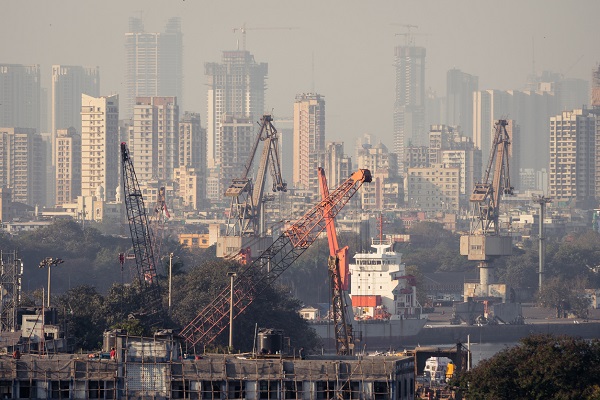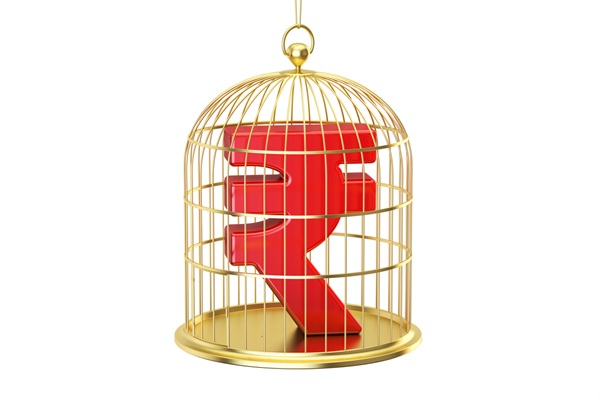.png)
November 24, 2025 at 3:06 PM IST
India’s economic growth in July–September is projected to reach a median 7.4%, according to forecasts from 10 research and financial institutions. The estimate sits above the Reserve Bank of India’s 7% projection for the quarter, though slower than 7.8% in April-June. Forecasts range from 6.8%-7.7%.
|
Organisation |
Jul-Sep GDP Forecast (%) |
|
Deutsche Bank |
7.7% |
|
DBS Group |
7.5% |
|
Nomura |
7.6% |
|
Moody’s Analytics |
6.8% |
|
SBI |
7.5% |
|
ICRA |
7.0% |
|
Nirmal Bang |
7.0% |
|
India Ratings |
7.2% |
|
IDFC First Bank |
7.3% |
|
Emkay Global Financial Services |
7.4% |
|
Median |
7.4% |
Growth drivers remain broad-based. State Bank of India expects stronger investment activity, firmer rural consumption, and steady services and manufacturing performance. It notes that high-frequency indicators showing acceleration rose to 83% in July-September from 70% in the previous quarter.
IDFC First Bank highlights a clear rural recovery, seen in higher tractor and two-wheeler sales and easing reliance on NREGA, supported by rising rural wages. Industrial activity indicators, including IIP and freight volumes, also strengthened. It warns, however, that weaker state government capex and slower central revenue growth could temper public investment support later in the year. Urban demand remained uneven, though activity in October improved following GST cuts.
India Ratings expects private consumption to have grown 8% year-on-year, aided by a favourable base, low inflation, improving rural wages and higher employee costs at listed companies. Income-tax cuts in the 2025-26 Budget have also supported spending. Government consumption likely slowed to 3% from 7.4% in April-June due to lower central expenditure, partly offset by stronger state spending.
Exports of goods and services are expected to have risen 11.4%, the fastest pace in 13 quarters, driven by front-loading of orders ahead of tariff changes. Goods exports grew 13.5% in rupee terms and services exports rose 13.3%. Imports rose 8.1%, pointing to resilient domestic demand. Investment demand is expected to have grown 7.5%, supported by government capex and stronger output of construction-linked goods.
Moody’s Analytics expects growth of 6.8%, citing softer export momentum despite support from lower interest rates and GST cuts. DBS Group expects growth at 7.5%, supported by a favourable base, weak deflators, front-loaded exports, and government spending. It notes that private investment and sector-specific weakness, including in IT, continue to weigh on overall performance.
Sectoral Performance
India Ratings projects services GVA growth of 8.5%, driven by trade, finance, real estate, and professional services. Credit growth improved across personal, services, and MSME categories. Listed companies in education and health also reported stronger activity.
Agriculture GVA growth likely moderated to 3.2% due to slower kharif sowing and heavy rainfall. Industrial GVA growth is projected at 7.8%, supported by manufacturing and construction. Manufacturing GVA likely rose 8.5%, aided by higher output and base effects. Construction sector GVA is expected at 8.7%. Electricity GVA grew 5%, while mining is expected to show a slight contraction.
Policy Implications
The July–September GDP reading will shape the RBI’s policy review next week. A print close to the median forecast of 7.4% would underscore the strength in domestic demand at a time when inflation is below the 4% target. This strengthens the case for continuing the easing cycle at a measured pace.
The Monetary Policy Committee is likely to view stronger consumption and improving rural incomes as signs of stabilising demand. Meanwhile, easing price pressures provide room to support growth.
The RBI will also assess how GST cuts, low deflators, and front-loaded exports are affecting real versus nominal momentum. The policy stance in upcoming meetings will depend on the balance between growth resilience and any signs of renewed price pressures, especially as festive-season demand moves into the December quarter.




